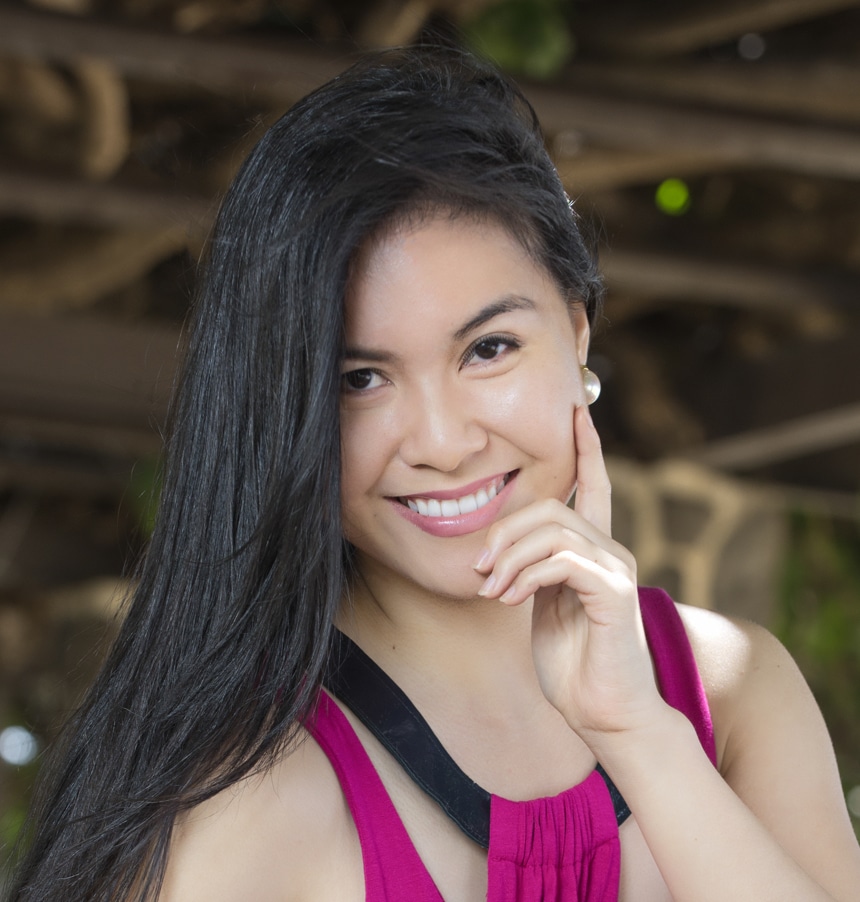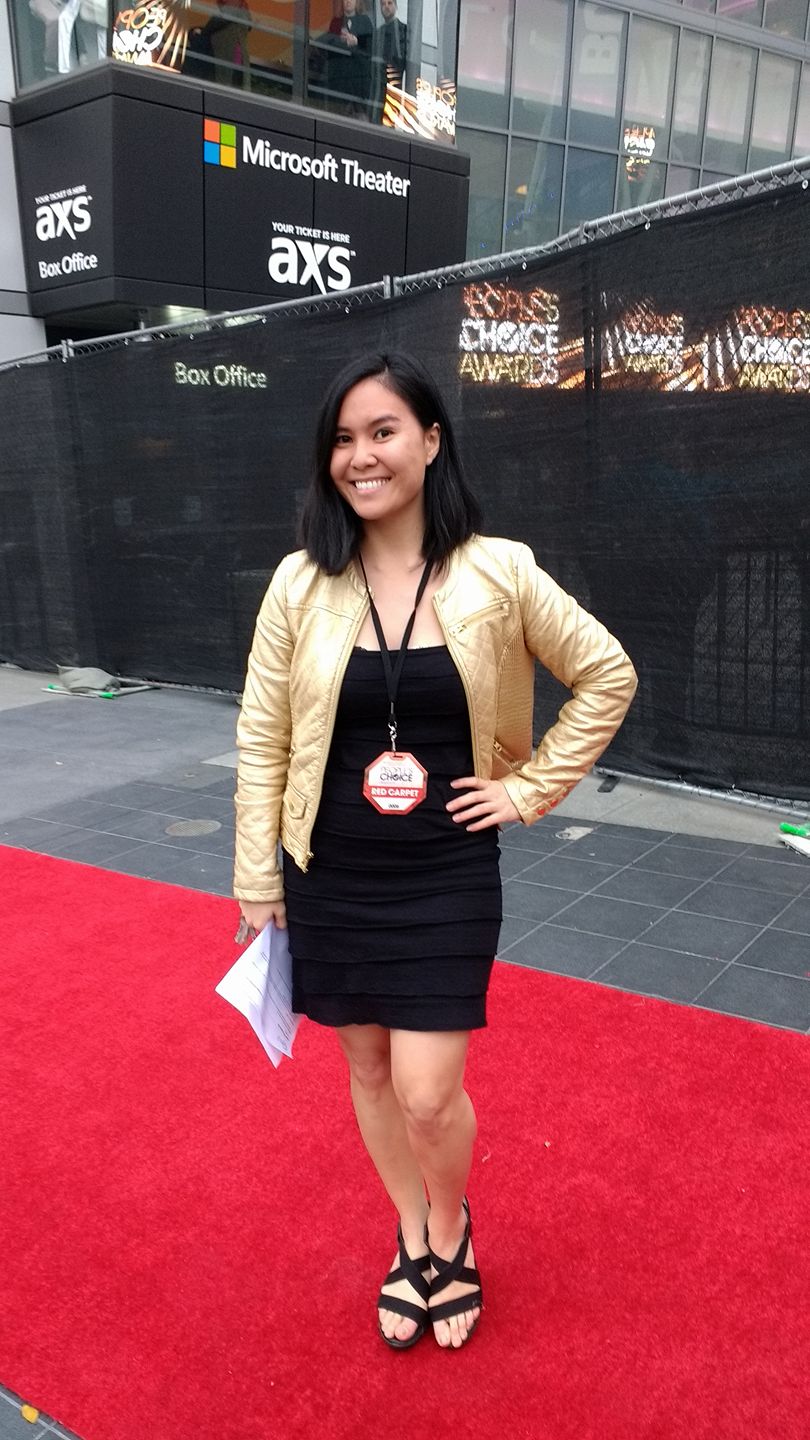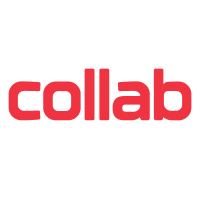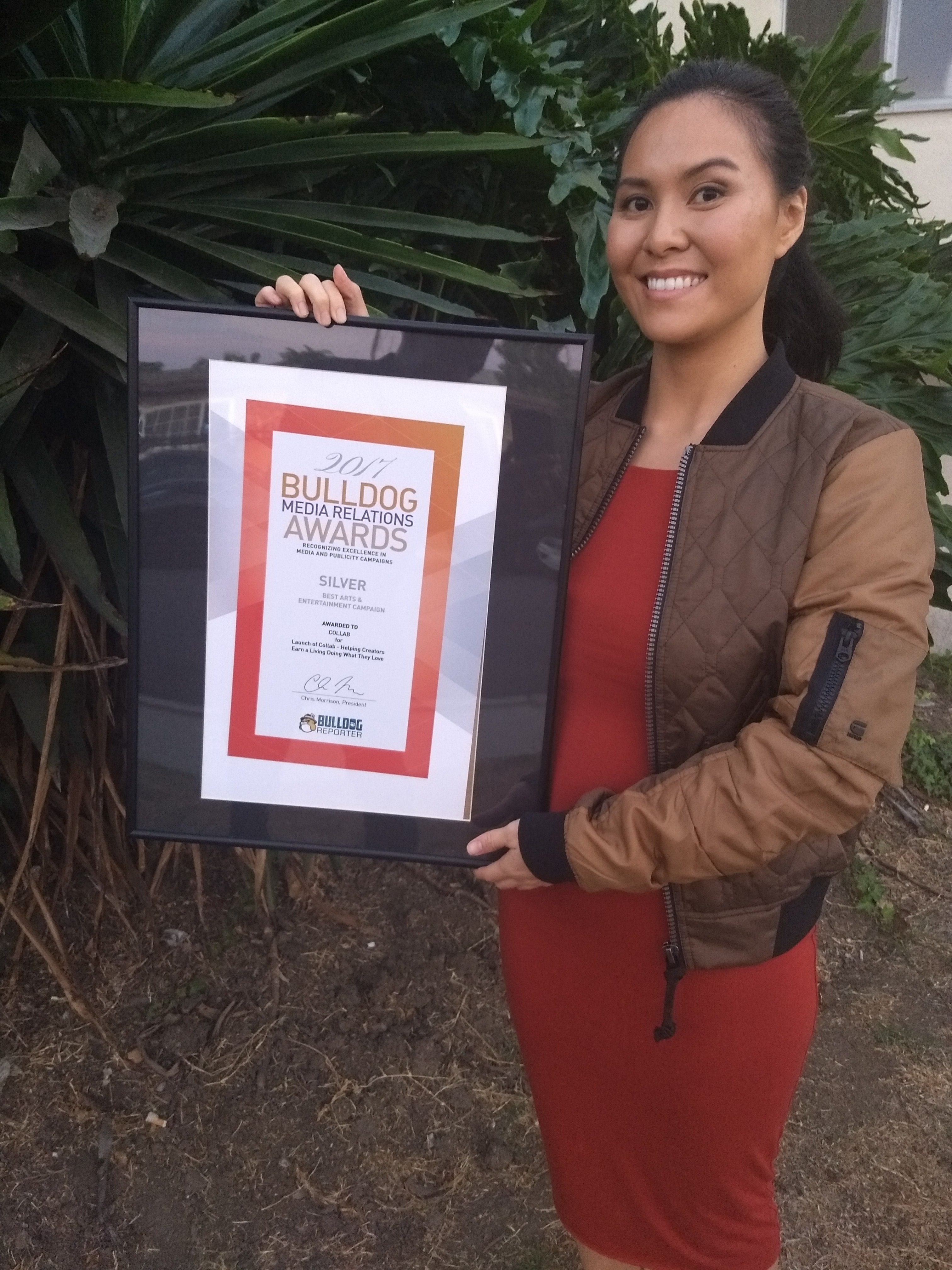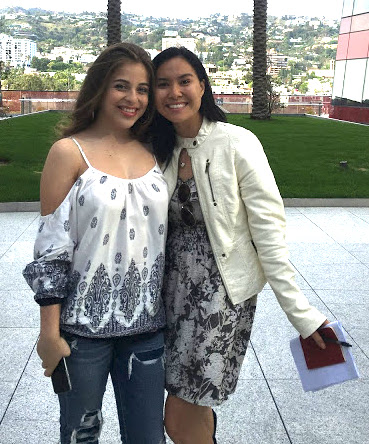Bulldog Media Relations Silver Award Winner, Best Arts & Entertainment: A Q&A with Collab’s 2017 Director of Communications Tiffany Au
Bulldog’s 2018 PR Awards are now open, with more categories—and more ways to win—than ever. Enter now!
While Los Angeles is the entertainment capital of the world and home to many well-known celebrities, the rise of social media “influencers” have spawned a new entertainment economy and type of celebrity. From King Bach’s comedic shorts to the trendy musical.ly videos of lip-synching teen queen Baby Ariel, it’s no surprise that businesses have flocked to cash in on short-form content, including LA-based digital entertainment company Collab. With a unique foothold in the video market, Collab hired marketing and publicity veteran Tiffany Au at the end of 2015 as their Director of Communications to serve as a spokesperson and lead their brand launch and introduce the company publicly to the world.
In 2012, digital video experts, James, Tyler, and Will McFadden founded Collab to support rising Vine creators. They pioneered the business around the six-second video platform Vine and developed a partner program that allowed Viners to monetize.
Collab’s publicity goal for the year from 2016-2017 was to strategically execute a brand positioning campaign educating digital, lifestyle and entertainment media about the company’s digital monetization, brand campaigns and production capabilities. Au was tasked to develop a multi-pronged campaign to promote the virtually unknown company to the media.
This article covers how Au overcame the lack of media interest for Vine and short-form creators with consumer and corporate campaigns, including media relations, corporate social responsibility projects, influencer marketing, event-planning and red carpet activations.
“PR is more than just media relations. PR incorporates being a brand marketer, partnerships manager, a producer, a project manager, a creative strategist, an event-planner, a social strategist and an art director. I stepped into all these roles and more during the campaign,” Au says.
Follow Au’s strategy as she navigated multiple branding pivots, including repositioning the company from a ‘multi-platform network’ to a ‘digital talent network and entertainment studio,’ as well as announcing their original content development and international formats business in Korea. Au provides insight into her crisis communications strategy when Vine shut down and how she helped tell the story of the company’s expansion working with creators across SnapChat, Instagram, YouTube and musical.ly creators. She also shares how she elevated Collab into an award-winning company with powerful submissions championing their campaigns in digital.
Under Au’s management, the positive, strategic press placements were impactful in securing brand partners, new influencers, and recognition in the digital entertainment and tech industries. Read on to see why Collab won a Silver Award in the “Best Arts and Entertainment Campaign” category in Bulldog Reporter’s 2017 Media Relations Awards.
Campaign Challenges
Early 2016, Collab’s publicity team was tasked to create mass awareness and excitement around the company in a selective, competitive digital entertainment market that mainly focused on YouTube. The main challenge was to establish Collab in the digital media, business and tech verticals and break into the mainstream entertainment media.
During this time, the influencer entertainment industry was still described as the ‘wild, wild west’ and Vine talent were hardly covered in the press. Recognizing that MCN business models were not popular, Au created an engaging campaign educating press about the company’s origin story, why they were unique, and how each distinct business model supported the company’s overall mission to support creators. The mission was to demonstrate that Collab was not a typical MCN and illustrate that they were a strong competitor amongst the many influencer networks and agencies signing digital talent.
“When I came aboard entertainment studio Collab early 2015 to launch their brand to the world, there was a lack of media interest for short-form Vine creators,” Au says. “This was a huge challenge since the company pioneered their business around Vine talent and rights management. While reaching out to the mainstream media, I discovered that media outlets were more interested in covering YouTube content creators. Vine ‘celebrities’ were still a mystery. I also quickly realized that due to the fast-moving, fluctuating nature of social media trends, as well as the ever-revolving door of new Vine talent, it would be an additional challenge to elevate Collab’s brand on par with more established digital talent networks representing YouTube stars.
“Not only would I need to create a corporate publicity campaign focused on the company (which had various complex business models), I would also need to create a multi-pronged plan to pitch our Vine talent, source consumer-focused Vine-related stories, and educate the mainstream press on why six-second video content was media worthy. In addition, the term ‘multi-channel network’ (MCN) had a negative connotation and I needed to position Collab as a new studio model, not the typical MCN. Our main challenges included establishing Collab’s brand in the digital media verticals and breaking into the mainstream entertainment media.”
The challenges in a nutshell, according to Au:
- “The digital entertainment industry is a young industry, mostly focused on YouTube, and has only become more mainstream in the last five years.”
- “Most digital writers were not aware that MCNs may have different business models.”
- “Collab was a startup and had virtually zero presence in the media.”
- “Collab’s revenue stream is complex and the company has multiple business models, which had to be incorporated into a cohesive story”
- “Most reporters do not recognize even the most famous social media influencers due to the changing trends and popularity of digital platforms. This makes it challenging to share the company’s achievements unless the reporter really understands the digital landscape.”
- “The digital industry changes quickly; we had to pivot to another story if it was no longer relevant.”
- “Early 2016, social media influencers expected to be paid when doing press interviews; it required a sensitive approach when securing quotes and press participation.”
- “Most entertainment reporters did not necessarily care for ‘creators’, ‘influencers’ and non-mainstream celebrities when looking for a story”
- “There are fewer digital-focused media outlets and digital reporters for outreach”
PR Strategy
To help Collab meet its objectives and overcome these challenges, Au developed a multi-pronged PR strategy. First, to position Collab as experts in monetizing short-form content, she shared the founders’ origin story, specifically their work pioneering a monetization system around Vine’s ecosystem and robust roster of talent.
By positioning Collab as experts in Vine, Collab drew more interest from digital entertainment press because the market was oversaturated with MCNs claiming to represent digital talent across all platforms. At the same time, she teased that Collab has a multi-platform approach to influencer talent development on other platforms, including YouTube, Vine, Instagram, SnapChat and Facebook. That way, Collab was not cornered in one digital app market.
Next, Au identified top short-form content creators managed by Collab, who were popular on Vine, SnapChat and other similar digital platforms; she reached out to lifestyle and entertainment reporters to promote partnership announcements and highlight influencer stories. Au realized that consumer-driven stories about social media celebrities were buzz worthy and drove more traffic and attention to the articles, which elevated media and public awareness of their association with Collab. As part of the strategy, she pitched behind-the-scenes stories highlighting Collab produced projects to illustrate why these creators were popular.
She also walked Collab talent down red carpet events to meet the press, created stories promoting Collab’s digital tours (.i.e. Team Internet Live Vine Tour), and invited press to company events.
In addition, Au executed product and brand launch campaigns, including announcing Collab’s iOS app Rankzoo, the first analytics platform for Vine, the sticker emoji app they developed for social media star Baby Ariel, Arielmoji. She also championed branded content campaign launches, including Collab’s #NewWords campaign with dictionary.com, securing coverage in advertising and digital outlets.
After Vine officially shut down, the publicity education campaign shifted gears, and Au had to create an official descriptor for Collab that would stand the test of time as the company evolved.
“Early in the campaign, we realized that due to the changing digital landscape, we needed to select a company descriptor that would remain relevant if new technology and platforms were introduced. After syncing with the team, we framed Collab as the ‘largest independent multi-platform network’ (MPN)—an evolution of the MCN model. This allowed room for the company to try new business strategies while still staying true to their brand.”
“However, when Twitter announced that they planned to shut Vine down, I executed a crisis communications campaign informing relevant media that Collab would still continue to support content creators on other platforms. The unexpected news called for a pivot in our strategy, one that showed we were actively supporting talent on other platforms. At this time, we had started working with musical.ly stars so I worked with talent managers to source inspirational musical.ly stories from the talent we signed, including promoting #1 musical.ly star Baby Ariel,” she adds.
“We also decided to reposition Collab as a ‘digital talent network and entertainment studio,’ recognizing that the new company descriptor will stand the test of time and reflect our various business models—branded content, original content, tech products, rights management and talent management. The goal was to avoid confusing press as the business evolved. While pitching requires adapting to the reporter’s language, regardless of whether I pitched Adweek or The Hollywood Reporter, the company’s message should be consistent.”
The team then sought to pivot pitches and strategy highlighting Collab’s association with top influencers on new and emerging platforms, such as musical.ly, the lip-singing video platform, heavily concentrating on media relations with regional and key national titles to educate them on Collab’s unique business model. Au focused on building awareness of social influencers to increase media interest for the topic of short-form content creators as a whole. This resulted in a strategic partnership announcement plan that delivered key coverage in targeted media categories, including news, tech, lifestyle, digital media, entertainment and business. She also leveraged top influencer involvement by creating social good multi-platform campaigns to create excitement and connection with entertainment media.
In addition, she worked to position Collab executives as thought leaders in the digital entertainment industry by identifying trending news pieces where Collab could provide expert commentary. Leveraging key world events in the entertainment industry, such as MipCom, Shorty Awards, Streamy Awards and VidCon, Au successfully promoted the company’s talent, television and digital shows.
Campaign Implementation
Collab’s publicity team developed and executed a launch campaign that, over the year, would create huge industry and consumer awareness and excitement around Collab’s brand. Au heavily concentrated on developing strong media relations with niche digital media outlets that covered the video industry news (i.e. VideoInk, Tubefilter) to create an ongoing pipeline of stories covering Collab activities and events, while aiming high with key entertainment outlets (i.e. Variety, The Hollywood Reporter, RealScreen). She sought to feature both company news announcements, as well as behind-the-scenes features that gave reporters access to exclusive videos and interviews to generate interest. She submitted the executives and company campaigns into awards and created events that highlighted the company’s work with influencers. She also stepped in as a personal publicist to top talent that the company represented to build up the talent’s reputation and by doing so, build up the company’s reputation in association with the talent.
“As an in-house publicist, you can be cross-functional. I found a lot of great stories working with all the departments and also outside partners.”
Au drove home the message that unique to the company’s business model is helping influencers make money on non-monetizing platforms, unlike other companies that focus on YouTube, which has monetization and ad-based capabilities built in their platforms.
Lastly, the team leveraged their partnerships with other high-profile influencers in the space (i.e. #1 Vine influencer, KingBach and BlackBoxTV), and created interviews with digital media and entertainment writers to help achieve the client’s objectives and ensure the story of Collab and their involvement was accurately reported and understood.
The Results
“Our results surpassed our initial goals. Within the first three days of hiring me, I secured coverage in Forbes, CNET, and VideoInk,” says Au. “Over the year, it grew to more than 100+ features and mentions of Collab across key print, online and digital outlets including Variety, The Hollywood Reporter, USA Today, Billboard, The Wrap, The Wallstreet Journal, Realscreen, LA Times, Huffington Post, Tubefilter among many others. The year-long campaign, which included many pivots while the digital trends continued to change, garnered over 700,000 hits (in mainstream media and mobile video), as well as more than 700,000 journalist shares, and 300,000+ social media shares across all articles. Leveraging the great press placements I secured featuring the #NewWords campaign in partnership with dictionary.com, I championed Collab’s submission and first-ever win for the Shorty Awards Best Multi-platform campaign.”
“Collab was successfully positioned as expert commentators in the video industry and was always in the news during key moments of Vine, including news speculation of Vine’s decline (in USA Today Tech) and final shutdown (Adweek, Adage, CNET). Collab was able to communicate to the press their mission to help creators during these crucial times,” she explains.
“Collab’s four business models were also successfully promoted in announcements, mainly Collab’s rights management services, talent management services, branded content services, and TV production and original content services.”
In addition, “Collab successfully leveraged top influencer involvement to share the articles secured with Collab inclusions on their social media channels for increased shares of the article and engagement with fans and stakeholders,” she adds. “Top Vine talent ‘KingBach,’ who has over 30MM fans on social media, shared his signing announcement with Collab across his socials. Number one musical.ly talent ‘Baby Ariel,’ who has over 20MM fans on social media, shared articles that included Collab in the ‘Arielmoji’ announcement.”
Secrets of Success
Au shares the following tips to help other communications pros achieve a similar impact with their next entertainment campaign—and demonstrating Collab was selected as a Silver Award winner in Bulldog’s 2017 Media Relations Awards:
- “Have a meeting with the leadership team early on to establish clear goals and expectations.”
- “Listen closely and identify what differentiates the company from the rest of the competitors.”
- “Research to uncover the major and underlying themes and trends related to the company and industry.”
- “Understand that not all publicity campaigns run the same. PR is always customized and while some celebrities and companies seek every media opportunity possible, others are more selective. Learn to be flexible in your expertise of what the client needs and should do and what the client expresses they need.”
More takeaways
Au offered much more information about the campaign in a Q&A with Bulldog Reporter, included here to share these terrific additional insights:
What are your best strategies for social media engagement and integration with other digital platforms?
“I advise brands and agencies to create collaboration opportunities between content creators, as well focus on a process that supports authentic influencer participation. With a smaller budget, corporate social responsibility initiatives are great ways to promote a good cause, as well as garner genuine engagement from social media influencers. Creators often feel disconnected when they work with brands seeking to control the creative process.
“On the other hand, brands need to review the content before it goes live. To ensure a branded content campaign goes well, you should choose creators that fit the brand in question and provide clear guidelines from the get-go. Creators are very protective of their own reputation, style, and audience. They also have a lot of options—therefore, brands must understand that they will create art that feels authentic.
“When I launched the #Roar4TCA multi-platform campaign in partnership with Teen Cancer America and Good Amplified, we were able to get 6 influencers reaching 1.5 million fans across Instagram, YouTube, Snapchat, and Vine to participate. The results were exciting; we received 860k views and 89k likes, comments, and shares! Young Hollywood and Wonderwall covered the campaign in the press. The process was smooth because I clearly communicated expectations and goals at the start of the campaign.”
In what unique ways did you approach and build rapport with reporters and influencers in this campaign?
“The market was oversaturated with MCNs and influencer agencies representing digital talent. To draw interest from the media, I implemented an educational campaign to spread awareness specifically about Collab’s insight into the Vine creator market. If you’re creating company talking points, it’s very important to define what differentiates your company from competitors.
“Sharing the origin story of the founders and how they pioneered the business around Vine was very important in this media launch. While building the rapport and brand loyalty of the company, I simultaneously planted the idea that Collab had a multi-platform approach to rights management. By doing so, Collab would not be pigeon-holed in the Vine market.
“Identifying thought leadership, events, and commentary opportunities were essential to attract media attention. I knew that I frequently covered digital news and when it came time for Vidcon, the annual digital conference, I built a great relationship with their Tech reporter who frequently asked for comments related to the video space.
“Some of my best articles came from identifying top short-form content creators and offering reporters the opportunity to check out our workspaces, and CSR, original content, and branded content activations. I was able to build a very strong relationship with a reporter, Todd Longwell, who I worked with to feature Collab in a six-page print, digital and video spread in Variety magazine highlighting downtown LA’s tech scene.
“I also created a strategic media plan that delivered key coverage in targeted media categories, including news, lifestyle, digital media, entertainment, business. We only identified announcements that positioned Collab as either innovative or digital experts in emerging areas (i.e. Collab moves into 360 video, Collab signs top talent, Collab breaks into a new market, etc.). When we signed the ‘King of Vine’ Andrew Bachelor, I announced the news in The Hollywood Reporter, which helped amplify the company’s digital monetization capabilities in the entertainment business space. I also secured 11 media pieces, including a print and online home-page spread in People magazine and INSTANT promoting the Baby Ariel and Collab partnership for her new sticker emoji app ‘Arielmoji’.
“As the company expanded, I worked with high-profile partners including Spotify and ACE Media to promote ‘Trading Playlists’, an original series. By continuing to source stories that crossed many verticals and themes, I could leverage previous news coverage to share with reporters who had different interests.
“Over time, I found that reporters were interested in consumer and human interest stories when it came to creators. I leveraged top influencer involvement to create excitement and connection with entertainment, such as securing a front page three-part series with AOL featuring our talent Baby Ariel on how she managed her social media accounts. When talent articles were secured, I asked talent to share the articles on their social media channels. Some of the talents, for example, Baby Ariel and King Bach, have over 20-30 million followers across all their social media; the reporters were always very happy when the talent re-shared their articles.”
What obstacles did you encounter during your campaign, and how did you overcome them?
“A few obstacles I encountered included working under quick turnaround times in an industry that was constantly changing, as well as serving as a one-woman publicity department for a growing company of 75 employees.
“When I first came aboard, the company represented about 300 creators and in over year it had grown to represent over 400 creators. The quick company growth, coupled with the fact that I needed to work with six departments producing varying services—including the branded content, original content, engineering, creative, rights management and talent management teams—required a lot of multi-tasking. I was able to overcome limited resources and manpower by staying flexible, as well as exercising organization and time-management skills.”
What key lessons did you learn during this effort that you will apply to your next campaign?
“One key lesson I learned that it’s very important to find creative ways to continue building the relationship with the media. Sometimes the company doesn’t have a lot of news but it doesn’t mean that you stop sending updates to the press. If your company is hosting an event or you have some statistics that support a trend or idea you’ve been advocating for, you should definitely share that information. There were times when I didn’t have hard news to share but I spent time brainstorming infographics ideas, submitting the company to awards, finding events where I could easily meet reporters, working red carpets to get the talent and company in front of the media, and researching trends.
“I also learned that one sentence in a trending article can be just as impactful the company’s bottom-line as an entire CEO Q&A and it’s always important to get feedback from the company when an article is secured. For example, I was able to place a Collab quote in a Variety magazine print feature, cover story about Twitter and my CEO said that the mention drew a lot of attention for the company. PR is all about discovery, consistency and persistence.”


